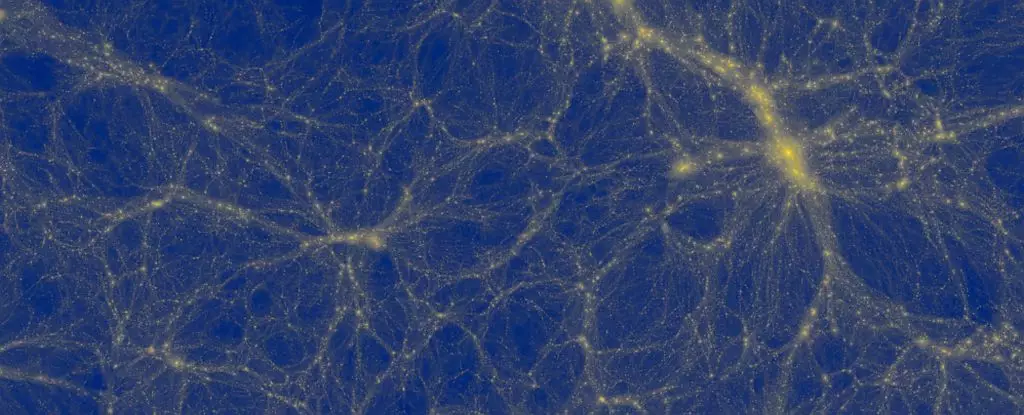How did the universe come to be? This age-old question has captivated the minds of scientists and philosophers alike for centuries. We, as humans, have long grappled with this mystery, pondering over the origins of the dot we call home, the star that sustains us, and the vast cosmic structures that surround us. Astronomers, armed with the largest project of its kind to date, are now embarking on a quest to find answers through computer simulations of the entire universe. Meet the FLAMINGO simulations – a groundbreaking endeavor to unravel the secrets of our existence.
At the heart of these simulations lies the desire to comprehend the evolution of every known component of the universe. This includes the stars, galaxies, and all the tangible matter within our reach, as well as the enigmatic forces of dark matter and dark energy. To achieve this ambitious goal, the FLAMINGO simulations harness the power of a supercomputer housed at the DiRAC facility in the United Kingdom.
These simulations are no ordinary computations; they are colossal in scale and complexity. The largest simulation in the FLAMINGO project entails a mind-boggling 300 billion particles, each mimicking the mass of a small galaxy. These particles exist within a vast cubic volume spanning 10 billion light-years. To cope with this computational load, the astronomers have developed a new code named SWIFT, which efficiently distributes the complex calculations across an astounding 30 thousand CPUs.
A significant focus of the FLAMINGO project is resolving a predicament known as the sigma 8, or S8, tension. The origins of this tension lie in measurements derived from the cosmic microwave background, a faint microwave radiation that permeates the universe. According to these measurements, celestial structures should have gravitationally clumped together more than they currently appear to have. Such a discrepancy poses a formidable challenge to the cold dark matter model, which predicts a higher level of clumping.
The FLAMINGO team hopes that their simulations can shed light on this perplexing tension. While they have not yet succeeded in resolving the issue, the researchers have made a key realization – accurate predictions necessitate the inclusion of both normal matter and neutrinos. While dark matter predominantly governs gravitational interactions, ordinary matter contributes via pressure effects, such as radiation pressure and galactic winds. To account for this, the team conducts simulations that encompass all three types of matter, varying their parameters to observe the resulting impacts.
The challenges of modeling normal matter become apparent in the context of galactic winds. Unlike dark matter, which interacts solely through gravity, normal matter experiences additional complexities. These include pressure interactions and the unpredictable nature of galactic winds. Consequently, simulating normal matter requires significantly more computational power.
To overcome this hurdle, the FLAMINGO team turned to machine learning techniques. They employed a calibration process that involved comparing predictions from numerous small-scale simulations to real-world observations of galaxy masses and gas distributions within clusters of galaxies. This calibration provided valuable insights into the behavior of galactic winds, enhancing the accuracy of the simulations.
While the FLAMINGO project holds tremendous promise, it is crucial to recognize that its quest for answers is a marathon, not a sprint. The simulations encompassing normal matter are particularly demanding, requiring extensive computing resources. Consequently, further investigations into the S8 tension may take time. However, the FLAMINGO team’s diligent efforts have laid the groundwork for future breakthroughs.
At present, the FLAMINGO data remains private, as its size exceeds several petabytes. However, the team encourages interested individuals to reach out to the corresponding author for inquiries. As the project moves forward, continued research and analysis of the FLAMINGO simulations may yield profound insights into the origins and evolution of the universe.
The FLAMINGO simulations represent an audacious endeavor to unravel the mysteries of the universe’s origins. By harnessing the power of computer simulations on an unprecedented scale, astronomers are peering into the depths of time and space. Through their simulations, they hope to uncover the truths of our existence – from the unimaginable nothingness that preceded it all to the awe-inspiring structures we observe today. While the questions surrounding our origins may persist, the FLAMINGO project brings us one step closer to deciphering the enigmatic tapestry of the cosmos.


Leave a Reply